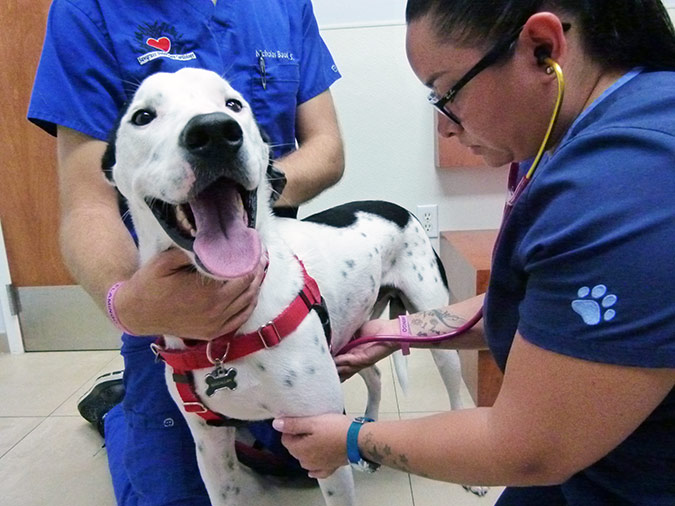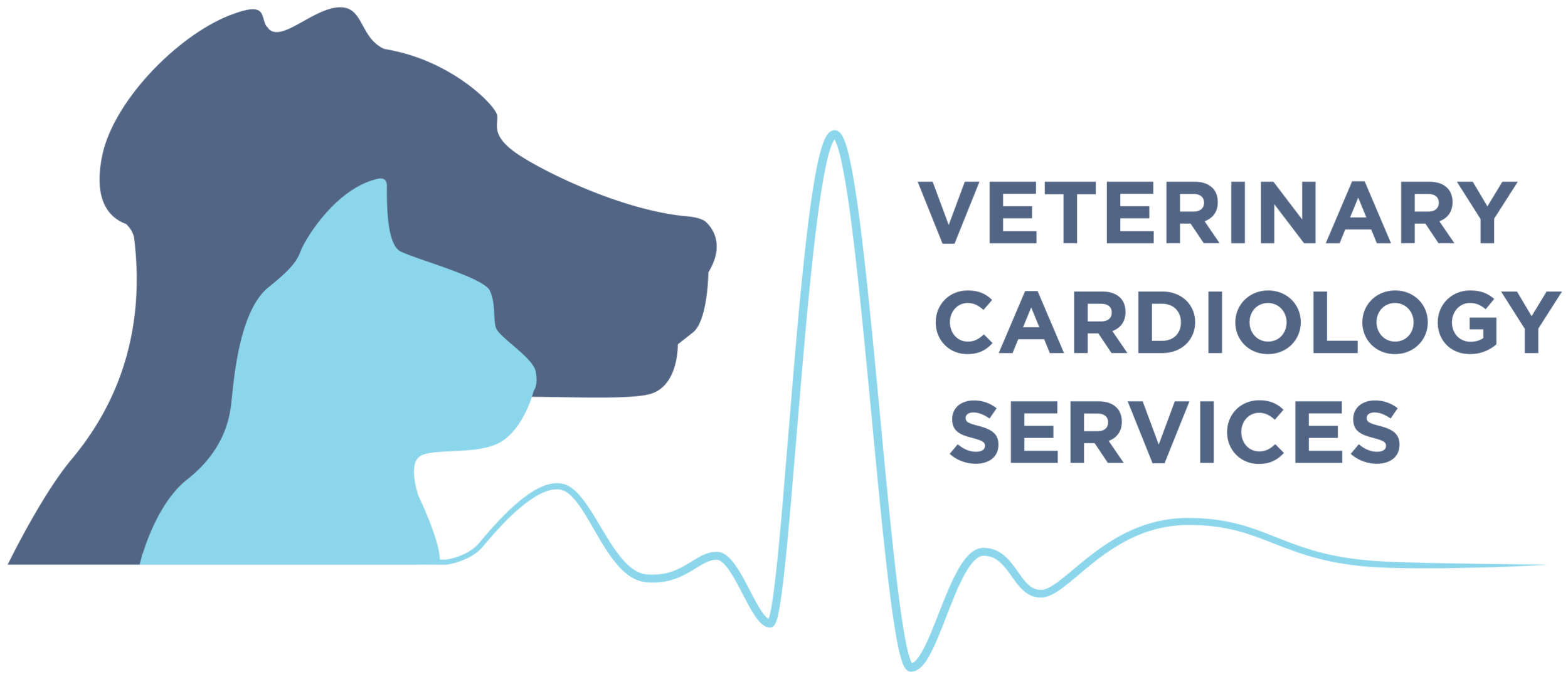The Function of Ultrasound and CT Check in Modern Vet Practices: Insights From Experienced Professionals
In modern-day vet techniques, ultrasound and CT scans greatly improve analysis abilities. These imaging strategies offer critical understandings into animal health and wellness, leading treatment choices. Experienced experts acknowledge the unique advantages of each modality. Ultrasound supplies real-time analyses, while CT scans supply detailed physiological details. Understanding their applications and roles raises crucial questions regarding their influence on patient end results and the future of veterinary diagnostics. What understandings can be acquired from their incorporated use?
Recognizing Ultrasound in Veterinary Medicine
Ultrasound is a crucial analysis device in vet medication, providing a non-invasive technique to picture inner structures. This imaging strategy utilizes high-frequency sound waves to produce real-time photos of organs and cells, permitting vets to analyze conditions without surgical treatment. Typical applications include evaluating the heart, liver, kidneys, and reproductive body organs, as well as keeping track of pregnancies.The treatment is relatively quick and can be carried out in various setups, making it an obtainable option for vets. Unlike radiography, ultrasound provides thorough info about soft cells and blood circulation, which is vital for exact diagnoses.Veterinary professionals depend on ultrasound to identify abnormalities such as tumors, cysts, and liquid accumulation. Its capability to direct biopsies and other procedures even more boosts its energy in medical method. By supplying a effective and safe method to examine interior makeup, ultrasound has actually come to be a cornerstone of contemporary vet diagnostics.
The Benefits of CT Scans for Pet Diagnostics
CT checks deal considerable advantages in veterinary diagnostics by offering boosted accuracy in determining internal conditions (Ultrasound For Dogs). As a non-invasive imaging strategy, they guarantee the safety and security and convenience of pets throughout evaluations. Additionally, CT checks promote a comprehensive analysis of interior structures, enabling a lot more efficient therapy planning
Improved Analysis Accuracy
Improvements in imaging modern technology have considerably boosted analysis accuracy in vet medicine, particularly through using CT scans. These scans offer comprehensive cross-sectional photos of an animal's internal structures, permitting veterinarians to recognize problems with accuracy. The high resolution and three-dimensional capabilities of CT imaging facilitate the detection of problems such as growths, cracks, and internal blood loss that may be missed out on with conventional imaging approaches. Furthermore, CT scans can help in pre-surgical planning by supplying an extensive sight of physiological connections. This degree of information not just improves the precision of diagnoses but additionally aids in customizing reliable therapy plans. Consequently, the combination of CT innovation right into veterinary methods is changing the landscape of animal healthcare, improving end results for clients.
Non-Invasive Imaging Technique
The intro of non-invasive imaging strategies has actually transformed animal diagnostics, with CT checks emerging as a prominent tool in vet practices. These scans offer high-resolution, cross-sectional pictures of an animal's internal structures, permitting veterinarians to analyze intricate conditions without the demand for invasive procedures. The benefits of CT scans include their capacity to detect tumors, cracks, and inner bleeding with amazing precision. In addition, they promote the assessment of soft cells and body organs, enhancing diagnostic abilities. The rate of CT scanning enables fast decision-making, which is vital in emergency situation scenarios. By lessening anxiety and discomfort for the animal, CT scans contribute to an extra gentle method to diagnostics, inevitably boosting treatment end results and progressing vet treatment.
Comprehensive Internal Assessment
A comprehensive internal evaluation is crucial for exact medical diagnosis and reliable therapy in veterinary medicine. CT scans deal substantial benefits in this regard, offering in-depth cross-sectional pictures of a pet's internal frameworks. This advanced imaging technique boosts visualization of complicated physiological regions, enabling vets to determine problems such as growths, fractures, and interior blood loss with better accuracy. Furthermore, CT checks assist in the assessment of conditions that may be testing to identify via conventional methods. The rate and precision of CT imaging additionally add to timely interventions, boosting patient results. As vet methods significantly incorporate CT technology, the benefits of considerable interior assessments come to be apparent, strengthening the importance of this device in contemporary veterinary diagnostics.
Comparing Ultrasound and CT Imaging Techniques
While both ultrasound and CT imaging serve vital functions in veterinary diagnostics, each technique provides distinctive benefits and limitations that can affect scientific decision-making. Ultrasound is specifically valued for its real-time imaging capabilities, allowing veterinarians to observe vibrant physiological processes. This method is non-invasive, portable, and does not include ionizing radiation, making it a much safer option for both pets and clinicians. Ultrasound might have limitations in imagining specific physiological structures or deep tissues.Conversely, CT imaging provides comprehensive cross-sectional sights of the body, enabling for specific localization of irregularities. It masters assessing facility organs and frameworks, especially in the thorax and abdomen. you could try this out CT scans call for sedation or anesthesia in lots of cases and involve direct exposure to ionizing radiation. Inevitably, the choice in between ultrasound and CT depends on the specific scientific circumstance, the location of interest, and the urgency of the analysis needs.
Case Researches: Successful Diagnoses Through Imaging
Study highlight the considerable improvements in diagnostic precision achieved via innovative imaging modern technologies like ultrasound and CT scans in vet techniques. These developments not just enhance the detection of different conditions but also assist in effective and timely treatment strategies. Evaluating details situations can highlight the transformative influence of these imaging methods on veterinary medication.
Analysis Precision Improvements

Imaging Modern Technology Advancements
As vet imaging technology remains to evolve, its effect on diagnostic capacities ends up being increasingly noticeable. Recent study highlight the successful application of innovative ultrasound and CT scan techniques in determining intricate conditions. For instance, site a vet clinic utilized high-resolution CT scans to detect a rare form of lung cancer cells in a pet, which standard imaging had missed out on. In a similar way, an ultrasound examination disclosed a stomach mass in a feline, motivating prompt surgical treatment and a positive end result. These developments not only enhance analysis accuracy but additionally enable vets to develop targeted therapy plans. By leveraging advanced imaging technologies, veterinary professionals are markedly improving person treatment, causing much more effective management of numerous health problems in animals.
The Function of Imaging in Emergency Veterinary Care
Imaging plays a vital role in emergency situation veterinary treatment, giving veterinarians with crucial details required to make fast, informed decisions. In urgent scenarios, strategies like ultrasound and CT scans enable specialists to quickly examine an animal's internal structures, identifying critical problems such as internal bleeding, cracks, or organ irregularities. These imaging techniques enable real-time analyses, facilitating timely treatments that can be life-saving. As an example, ultrasound is important for examining soft tissue injuries and conditions like liquid accumulation, while CT scans deal comprehensive pictures of complex anatomical frameworks, necessary for detecting injury instances. The speed and precision of these imaging methods boost the veterinarian's ability to create reliable treatment plans, making certain the very best possible results for their individuals. The combination of sophisticated imaging modern technologies into emergency situation veterinary techniques is not only helpful however significantly essential, as it boosts diagnostic capabilities and enhances overall pet care throughout vital moments.

Training and Experience in Vet Imaging
Innovative imaging strategies such as ultrasound and CT scans are vital for efficient vet care, the effective application of these technologies greatly depends on the training and proficiency of vet experts. Proficient use imaging tools needs extensive understanding of anatomy, pathology, and the principles underlying each modality. Vet professionals have to undergo customized training to accurately translate imaging results, which is vital for diagnosing problems and intending treatment.Certifications and proceeding education in veterinary imaging improve the abilities of experts, allowing them to remain updated with technical developments. Collaboration between radiologists and vets frequently brings about enhanced diagnostic precision, as experts can give understandings right into intricate situations. In addition, sensible experience in dealing with imaging equipment promotes confidence in its application. Inevitably, the high quality of vet imaging services is straight correlated to the degree of training and know-how possessed by the experts using these necessary diagnostic devices.
Future Trends in Diagnostic Imaging for Animals
With the fast innovations in modern technology, vet analysis imaging is positioned for substantial advancement in the coming years. Arising trends show a change in the direction of more mobile and obtainable imaging modalities, such as portable ultrasound gadgets, which can improve field diagnostics. In addition, the integration of expert system is anticipated to transform photo evaluation, permitting quicker and much more exact interpretations of results.Moreover, improvements in 3D imaging methods and calculated tomography will give veterinarians with more extensive sights of animal anatomy, leading to better treatment plans. Virtual fact technology might additionally play a function in surgical planning and education and learning, providing vets a special viewpoint on intricate cases.As telemedicine remains to expand, remote appointments assisted in by analysis imaging will certainly end up being extra typical, allowing experts to help family doctors in real-time. Generally, these fads are readied to boost the performance and performance of veterinary treatment, eventually boosting animal results.
Often Asked Inquiries
How Much Do Ultrasound and CT Checks Price in Veterinary Clinics?
The costs of ultrasound and CT scans in veterinary clinics normally vary from $300 to $1,500, depending on elements such as place, center type, and particular procedures needed for the pet's medical diagnosis and therapy.

Exist Any Kind Of Dangers Related To Ultrasound and CT Checks for Family Pets?
Ultrasound and CT scans normally present marginal dangers to pets. Nonetheless, possible problems include sedation reactions and exposure to anesthetics. Ultrasound For Dogs. Vets very carefully evaluate each situation to reduce any kind of threats connected with these analysis treatments
The Length Of Time Do Ultrasound and CT Treatments Usually Take?
Ultrasound treatments normally take about half an hour to an hour, depending upon the intricacy. CT scans, being more comprehensive, usually require half an hour to 90 minutes, consisting of prep work and healing time for the animal.
Can All Veterinarians Perform Ultrasounds and CT Scans?
Not all vets can perform ultrasounds and CT scans. Specialized training and qualification are typically needed to ensure expertise in these advanced imaging methods, which might limit their availability to veterinarians with added credentials and sources.
What Sorts Of Animals Profit Many From These Imaging Techniques?
Certain pet varieties, specifically canines and pet cats, advantage greatly from ultrasound and CT scans. These imaging methods enhance diagnostic accuracy for conditions like growths, inner injuries, and body organ problems, bring about better therapy results and client care. The high resolution and three-dimensional abilities of CT imaging assist in the detection of conditions such as lumps, fractures, and interior blood loss that could be missed with standard imaging approaches. Instance studies illustrate the considerable renovations in diagnostic accuracy accomplished via innovative imaging technologies like ultrasound and CT scans in veterinary practices. Improving diagnostic precision in veterinary practices has been substantially helped by innovations in imaging technologies such as ultrasound and CT scans. Advanced imaging techniques such as ultrasound and CT scans are necessary for reliable veterinary treatment, the effective execution of these modern technologies greatly depends on the training and expertise of veterinary professionals. Veterinary specialists need to undertake specialized training to precisely translate imaging results, which is crucial for diagnosing problems and intending treatment.Certifications and proceeding education in veterinary imaging boost the abilities of experts, allowing them Continued to remain updated with technological advancements.